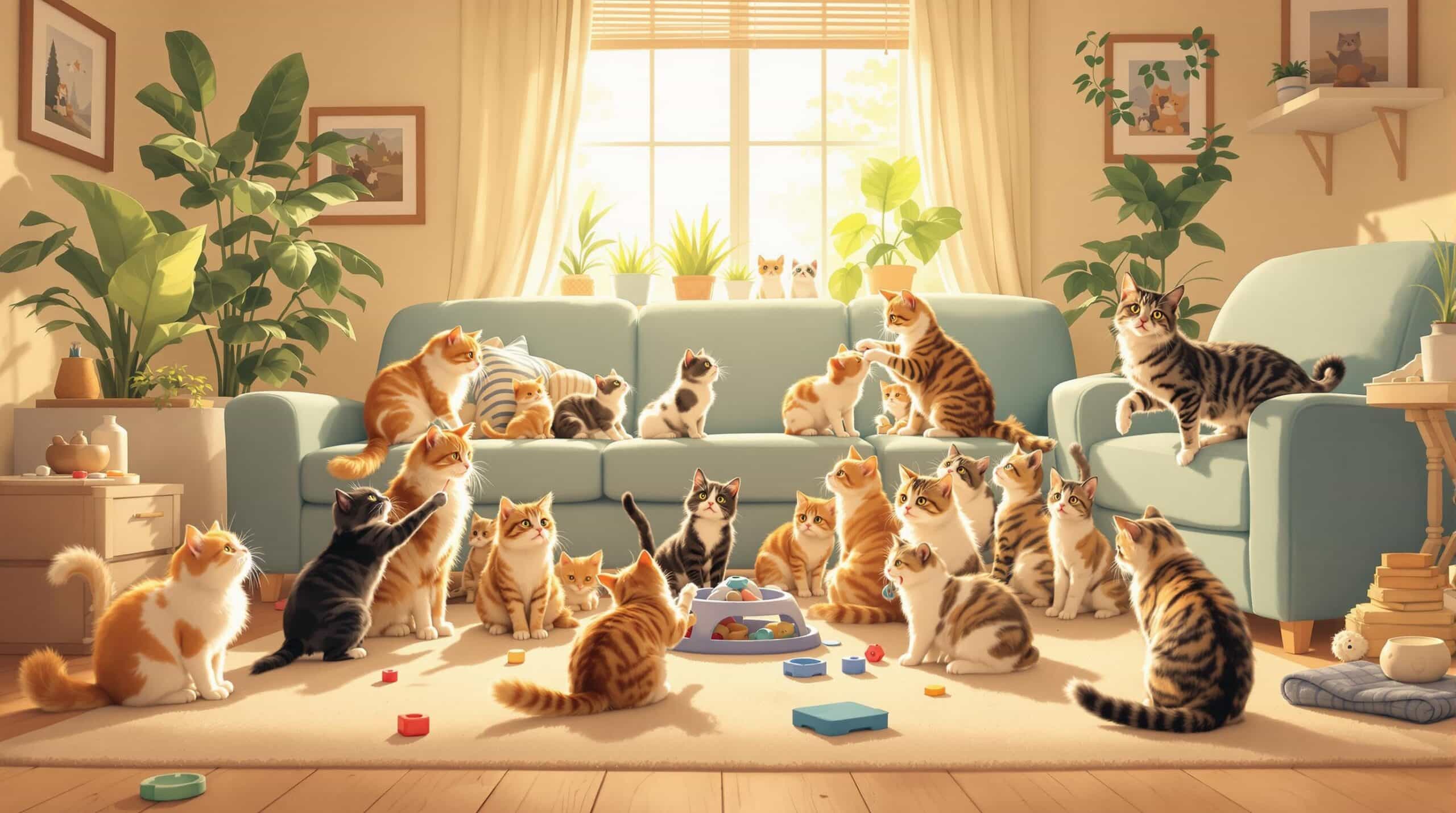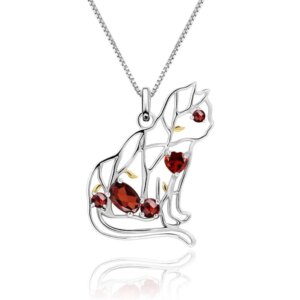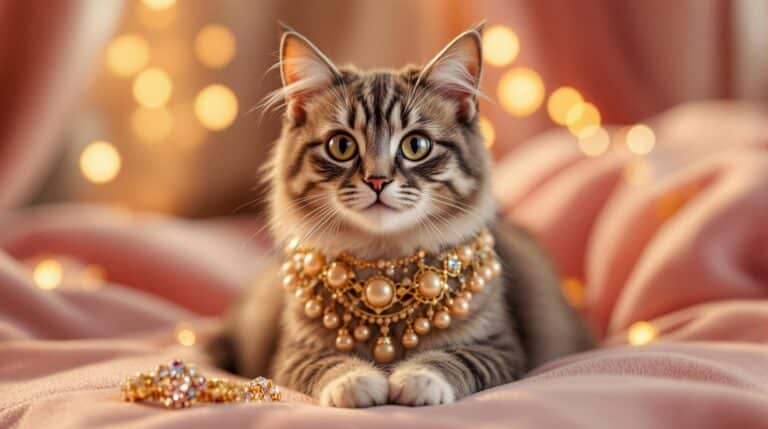Cats Connect, at Cat Karma Creations, we understand that cats are often perceived as independent and solitary creatures, but they are capable of forming deep and meaningful connections with humans and other animals. In this article, we will explore the fascinating world of cat social behavior, the importance of socialization, and practical tips for enhancing your cat’s social skills. Whether you’re a seasoned cat owner or a new pet parent, this guide will provide valuable insights and actionable advice to help you build a stronger bond with your feline friend.
The Science of Cat Social Behavior
Understanding Cat Communication
Cat communication is a complex and nuanced process that involves various methods, including vocalizations, body language, and scent marking. Understanding these communication methods can help you better connect with your cat and improve your relationship. Cats use a combination of meows, purrs, and other vocalizations to express their needs and emotions. For example, a soft purr often indicates contentment, while a loud meow can signal distress or a need for attention.
The Role of Body Language
Cat body language is another crucial aspect of their communication. Cats use their ears, tails, and body posture to convey a wide range of emotions and intentions. For instance, a cat with raised ears and a relaxed tail is likely feeling content and approachable. Conversely, a cat with flattened ears and a puffed-up tail may be feeling threatened or defensive. Paying attention to these subtle cues can help you understand your cat’s emotional state and respond appropriately.
Vocalization and Scent Marking
Vocalizations are a significant part of cat communication, and they can vary greatly depending on the context. Cats use different types of vocalizations to communicate different messages. For example, a high-pitched meow might indicate excitement or playfulness, while a low-pitched growl might signal aggression or fear. Scent marking is another important form of communication for cats. They use pheromones and scent glands to mark their territory and communicate with other cats. By rubbing their faces and bodies against objects and people, they leave behind a scent that can convey information about their identity and status.
The Importance of Cat Socialization
Early Socialization for Kittens
Early socialization is crucial for kittens as it helps them develop the social skills they need to interact positively with humans and other animals. Kittens exposed to a variety of people, environments, and experiences during their critical socialization period (between 2 and 7 weeks of age) are more likely to grow into well-adjusted adult cats. Early socialization can prevent behavioral issues such as fear, aggression, and anxiety. It also helps kittens form strong bonds with their owners and adapt more easily to new situations.
Socializing Adult Cats
Socializing adult cats can be more challenging but is still possible with patience and consistency. Adult cats may be more independent and less willing to socialize, but with the right approach, you can help them become more comfortable and confident. Gradual exposure to new environments, people, and other animals is key. Start by introducing your cat to new experiences in a controlled and safe environment. Use positive reinforcement techniques, such as treats and praise, to reward your cat for calm and positive behavior. Consistency is crucial, so make sure to provide regular socialization opportunities and be patient with your cat’s progress.
Benefits of Socialization
The benefits of socialization are numerous and can have a significant impact on your cat’s well-being. Socialized cats are generally happier, healthier, and more well-adjusted. They are less likely to exhibit behavioral issues such as aggression, fear, and anxiety. Socialization can also improve your cat’s interaction with other pets and people, making them more sociable and friendly. Additionally, socialized cats are more likely to form strong bonds with their owners, enhancing the quality of your relationship with your feline friend.
Enhancing Cat Social Skills
Positive Reinforcement Techniques
Positive reinforcement is a powerful tool for enhancing your cat’s social skills. By rewarding your cat for positive behavior, you can encourage them to repeat those behaviors in the future. Treats, praise, and playtime are all effective forms of positive reinforcement. For example, if your cat approaches a new person or animal calmly, give them a treat and some loving attention. This will help your cat associate positive experiences with social interactions, making them more likely to engage in these behaviors in the future.
Creating a Social Environment
Creating a social environment for your cat is essential for promoting positive social behavior. Provide your cat with plenty of opportunities to interact with people and other animals in a safe and controlled setting. Set up play areas where your cat can engage in interactive play with toys and other pets. Consider adopting a second cat if your current cat is lonely or needs a companion. Make sure to provide plenty of hiding spots and safe spaces where your cat can retreat if they feel overwhelmed.
Interactive Play and Training
Interactive play and training are excellent ways to enhance your cat’s social skills. Engage your cat in play activities that involve social interaction, such as chasing toys, using puzzle toys, and playing hide-and-seek. These activities can help your cat develop their social skills and build confidence. Training sessions can also be a fun and engaging way to bond with your cat and improve their social behavior. Use positive reinforcement techniques to teach your cat new tricks and commands. For example, you can train your cat to come when called, use a scratching post, or even perform simple tricks like sitting or high-fiving.
Managing Multi-Cat Households
Understanding Cat Social Hierarchy
In multi-cat households, understanding the social hierarchy is crucial for maintaining a harmonious environment. Cats have a natural inclination to establish a social order, and this hierarchy can influence their interactions and behavior. Some cats may be more dominant, while others may be more submissive. Pay attention to your cats’ body language and behavior to identify the dominant and submissive cats in your household. This can help you manage their interactions and prevent conflicts.
Promoting Harmonious Group Dynamics
Promoting harmonious group dynamics in a multi-cat household involves creating a supportive and enriching environment for all cats. Provide plenty of resources, such as food, water, litter boxes, and resting areas, to reduce competition and conflict. Make sure each cat has their own space and can retreat to a safe area if needed. Encourage positive interactions between cats by providing opportunities for play and socialization. Use positive reinforcement techniques to reward cats for calm and friendly behavior around each other.
Resolving Conflict and Stress
Conflict and stress are common in multi-cat households, but they can be managed with the right approach. Identify the sources of conflict and stress, such as territorial disputes or resource competition. Address these issues by providing ample resources and creating a safe and comfortable environment for all cats. If conflicts persist, consider consulting a professional animal behaviorist for additional guidance. They can provide tailored advice and strategies to help you resolve conflicts and promote a more harmonious household.
Popular Quote
“Cats are a mysterious, independent, and beautiful creation; a graceful animal, with a warm heart and a loving nature.” – Ann M. Martin
Statistical Fact
According to a study by the American Pet Products Association, approximately 95.6 million cats are owned as pets in the United States. This statistic highlights the widespread love and companionship that cats provide to their human families. However, it also underscores the importance of proper socialization and care to ensure that these beloved pets lead happy and healthy lives. (Source: American Pet Products Association)
Three Tips for Enhancing Cat Social Skills
- Start Early: Begin socializing your kitten as soon as possible, ideally between 2 and 7 weeks of age. Expose them to a variety of people, environments, and experiences to help them develop strong social skills.
- Use Positive Reinforcement: Reward your cat for positive social behavior with treats, praise, and playtime. This will encourage them to repeat these behaviors in the future.
- Create a Safe Environment: Provide your cat with plenty of hiding spots and safe spaces where they can retreat if they feel overwhelmed. This will help them feel more secure and confident in their social interactions.
Popular Questions
How can I tell if my cat is feeling anxious or stressed?
Cats can exhibit a variety of signs when they are feeling anxious or stressed. These may include hiding, excessive grooming, loss of appetite, and changes in litter box behavior. Pay attention to your cat’s body language and behavior to identify these signs and address the underlying issues.
What are some common mistakes to avoid when socializing a cat?
Some common mistakes to avoid when socializing a cat include forcing interactions, introducing too many new experiences at once, and not using positive reinforcement. It’s important to be patient, consistent, and gentle when socializing your cat to ensure a positive experience.
How can I introduce a new cat to my existing cat?
Introducing a new cat to an existing cat can be challenging, but it can be done successfully with the right approach. Gradually introduce the cats in a controlled environment, using positive reinforcement techniques to reward calm and friendly behavior. Provide separate spaces for each cat and gradually increase their interaction time over several days or weeks.
Final Thoughts About Cats Connect
In conclusion, understanding and enhancing cat social behavior is essential for creating a happy and healthy environment for your feline friend. By recognizing the importance of socialization, using positive reinforcement, and creating a supportive social environment, you can strengthen the bond between you and your cat. For more information and unique cat-themed gifts, visit Cat Karma Creations and explore our range of high-quality, handcrafted jewelry and accessories. If you have any questions or need assistance, feel free to contact us at our contact form or reach out to us on Facebook, Instagram, Pinterest, or Twitter.
Understanding the importance of socialization in cat care, identifying the key stages of cat social development, using positive reinforcement to encourage social behavior, creating a safe and stimulating environment for social interaction, recognizing and interpreting cat body language and vocalizations, incorporating social activities into daily routines to enhance bonding, and managing multi-cat households to promote harmonious social dynamics are all crucial steps in ensuring your cat’s well-being and happiness.
| Feature | Cat Socialization | Dog Socialization | Bird Socialization |
|---|---|---|---|
| Importance | Essential for preventing behavioral issues and promoting well-being | Crucial for obedience and social behavior | Vital for mental health and preventing stress |
| Methods | Gradual exposure to new environments, people, and other animals | Training classes, playdates, and public outings | Interaction, training, and environmental enrichment |
| Benefits | Improved behavior, reduced anxiety, and better health | Enhanced obedience, social skills, and overall well-being | Reduced stress, increased mental stimulation, and better health |
| Challenges | Cats can be more independent and less willing to socialize | Dogs may exhibit aggression or fear in social situations | Birds can be sensitive to changes and require consistent interaction |
| Best Practices | Start early, use positive reinforcement, and provide a safe environment | Consistent training, positive reinforcement, and social exposure | Regular interaction, mental stimulation, and a stimulating environment |
















